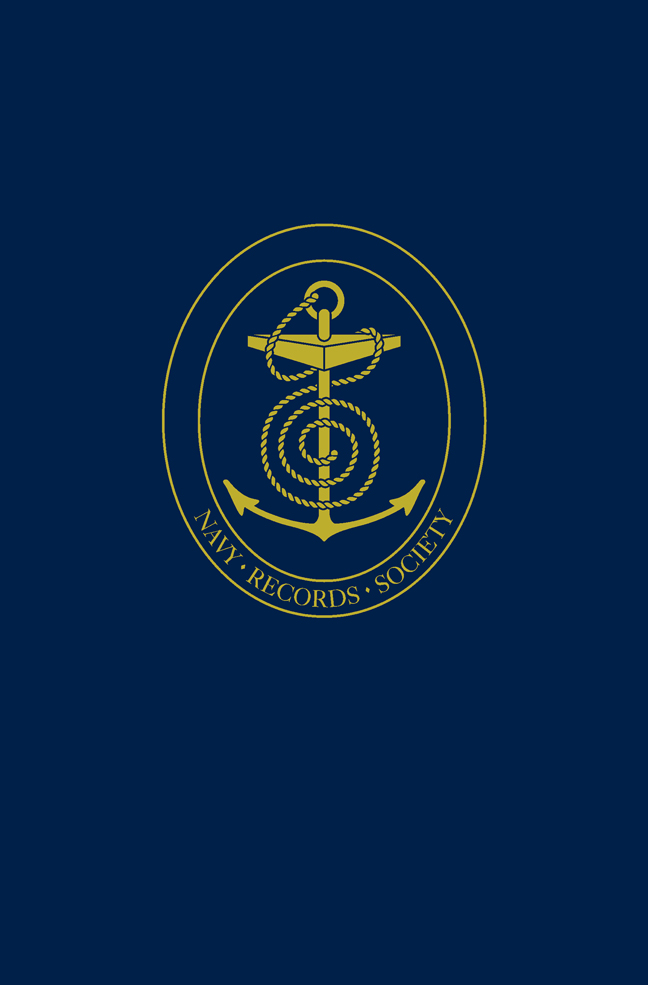21 results in Navy Records Society Publications

Anglo-American Naval Relations, 1917-1919
-
- Published by:
- Boydell & Brewer
- Published online:
- 14 May 2024

The Durham Papers
- Selections from the Papers of Admiral Sir Philip Charles Henderson Calderwood Durham G. C. B. (1763-1845)
-
- Published by:
- Boydell & Brewer
- Published online:
- 04 May 2024

The Naval Route to the Abyss
- The Anglo German Naval Race 1895-1914
-
- Published by:
- Boydell & Brewer
- Published online:
- 05 March 2024
- Print publication:
- 01 January 2015

The Navy of Edward VI and Mary I
-
- Published by:
- Boydell & Brewer
- Published online:
- 05 March 2024

The Royal Navy and the Mediterranean, 1919-1929
-
- Published by:
- Boydell & Brewer
- Published online:
- 05 March 2024

The Mediterranean Fleet, 1930-1939
-
- Published by:
- Boydell & Brewer
- Published online:
- 05 March 2024

The Cunningham Papers
- Selections from the Private and Official Correspondence of Admiral of the Fleet Viscount Cunningham of Hyndhope, O.M., K.T., G.C.B., D.S.O. and Two Bars
-
- Published by:
- Boydell & Brewer
- Published online:
- 05 March 2024

The Naval Miscellany
-
- Published by:
- Boydell & Brewer
- Published online:
- 05 March 2024

The Naval Miscellany
-
- Published by:
- Boydell & Brewer
- Published online:
- 05 March 2024

Anglo-American Naval Relations, 1919-1939
-
- Published by:
- Boydell & Brewer
- Published online:
- 05 March 2024

Papers and Correspondence of Admiral Sir John Thomas Duckworth
-
- Published by:
- Boydell & Brewer
- Published online:
- 05 March 2024

Naval Intelligence from Germany, 1906-1914
- The Reports of the British Naval Attachés in Berlin, 1906-1914
-
- Published by:
- Boydell & Brewer
- Published online:
- 05 March 2024

The Milne Papers
-
- Published by:
- Boydell & Brewer
- Published online:
- 05 March 2024

Anglo-American-Canadian Naval Relations, 1943-1945
-
- Published by:
- Boydell & Brewer
- Published online:
- 05 March 2024

The Fleet Air Arm in the Second World War
-
- Published by:
- Boydell & Brewer
- Published online:
- 02 March 2024
- Print publication:
- 30 April 2012

The Fleet Air Arm in the Second World War
-
- Published by:
- Boydell & Brewer
- Published online:
- 02 March 2024
- Print publication:
- 01 January 2018

Elizabethan Naval Administration
-
- Published by:
- Boydell & Brewer
- Published online:
- 02 March 2024

Nelson's Letters to Lady Hamilton and Related Documents
-
- Published by:
- Boydell & Brewer
- Published online:
- 27 February 2024
- Print publication:
- 31 December 2020

Chatham Dockyard, 1815-1865
- The Industrial Transformation
-
- Published by:
- Boydell & Brewer
- Published online:
- 27 February 2024

The Rodney Papers
- Selections from the Correspondence of Admiral Lord Rodney
-
- Published by:
- Boydell & Brewer
- Published online:
- 27 February 2024

